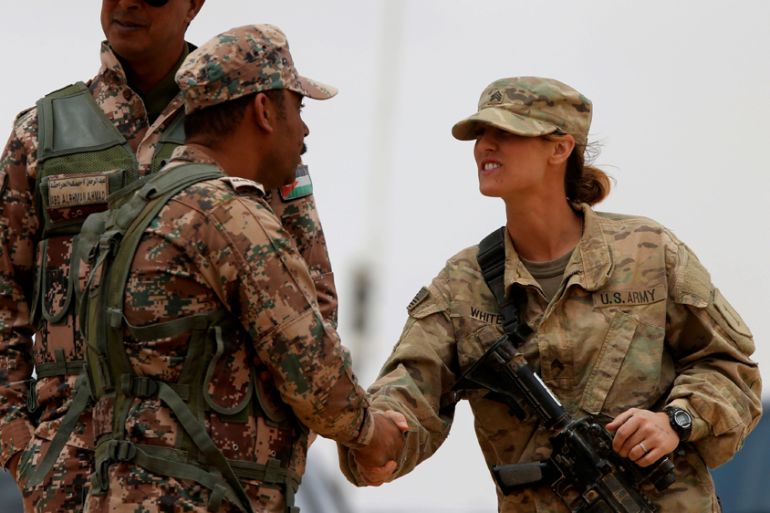Jordan, US launch Eager Lion military exercise
Some 7,400 troops from 20 nations taking part in Eager Lion military drills, ‘the largest and most complex to date’.

Jordan and the United States kicked off Eager Lion, an annual military exercise with about 7,400 troops from more than 20 nations taking part, on Sunday.
US and Jordanian officials said the manoeuvres would include border security, cyber-defence, and “command and control” exercises to bolster coordination in response to threats including “terrorism”.
Keep reading
list of 4 itemsBiden administration plans to send $1bn in military aid to Israel: Reports
Russia-Ukraine war: List of key events, day 811
Australian war crimes whistleblower David McBride jailed for six years
“Joint efforts and coordination and the exchange of expertise … are needed at the time when the region is facing the threat of terrorism,” Jordanian Brigadier-General Khalid al-Sharaa, who will head the exercise, told reporters.
US Major-General Bill Hickman, deputy commanding officer for the American army in the region, said this year’s Eager Lion exercise – the seventh so far – is “the largest and most complex to date”.
The highlight of this year’s war games, he said, will be that “for the first time ever a global strike mission” will be conducted by “two US Air Force B-1B bomber aircraft” – a long-range multi-mission bomber.
READ MORE: Jordan and Russia to cooperate on Syria military action
A statement by the Jordanian army said troops from Europe, Asia, Africa and the Gulf region – including from Britain, Japan, Kenya and Saudi Arabia – are taking part in the exercise, which runs through May 18.
About 6,000 troops from Jordan and the US took part in last year’s exercise, a joint operation first launched in 2011.
Jordan is a key partner in the US-led coalition battling Islamic State of Iraq and the Levant (ISIL, also known as ISIS) fighters in Syria and Iraq.
Two years ago, the US announced its intent to increase overall US assistance to Jordan from $660m to $1bn annually for the 2015-2017 period.
|
|